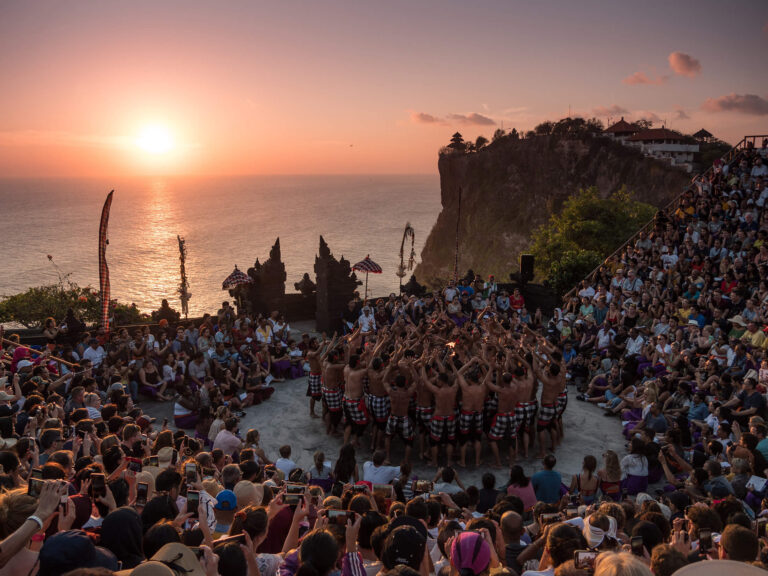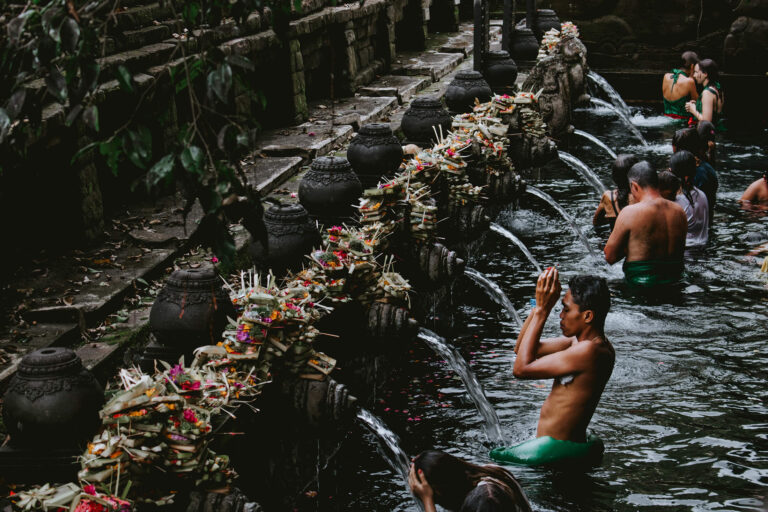Mount Agung in Bali: Closure, Wildfires, and the Importance of Cultural Respect
Mount Agung is Bali’s highest peak, a spiritually significant volcano, and a destination that draws tourists from around the world. However, recent events have led to a temporary closure of the mountain for hiking, and ongoing wildfires in the region have only added to the urgency of protecting this sacred site. For those planning to visit Bali or trek Mount Agung, understanding the current situation and respecting local traditions is crucial.
1. Mount Agung’s Spiritual Significance and Temporary Closure
Mount Agung is not just a tourist destination; it is the spiritual heart of Bali for the island’s Hindu population. The volcano is believed to be the home of gods and a vital element of Balinese Hinduism. As such, it is the location for many religious ceremonies throughout the year. Currently, a temporary closure has been put in place from October 1st to November 30th, 2024, to allow for sacred rituals. These ceremonies include Karya Tabuh Gentuh Wana Kertih and Nubung Pedashan, both of which are held at Pura Pasar Agung Temple, an important religious site on the slopes of the volcano.
These rituals are part of a 10-year cycle, and during this time, it is crucial that the mountain is left undisturbed. Balinese spiritual leaders have asked both locals and tourists to honor the closure. They emphasize that respecting the mountain’s sacredness is vital, especially during periods of significant religious activity [source].
For tourists, this means refraining from hiking on the mountain during this two-month closure. However, this also provides an opportunity to learn about Balinese culture and spirituality. Respecting local customs is not only a courtesy but also a way of showing gratitude for the opportunity to visit this beautiful island. Visitors should also take this time to explore other parts of Bali that remain open [source].
2. Wildfires on the Slopes of Mount Agung
In addition to the religious ceremonies, the area around Mount Agung has been severely impacted by wildfires. These wildfires have been spreading across the regencies of Karangasem and Bangli since mid-September, fueled by a combination of drought conditions and human activities. Over 730 hectares of forest have already been scorched, and firefighters are working tirelessly to prevent further spread [source].
The wildfires are a direct consequence of the severe drought affecting Bali, which has also led to a 14-day emergency status for the region. Natural causes, discarded cigarette butts, and unregulated trash burning have all contributed to the fires. Bali’s local government has urged residents and tourists to be extra cautious, particularly with how they dispose of cigarette butts or handle bonfires.
Firefighting efforts are made more difficult by Bali’s rugged terrain, especially on the slopes of Mount Agung. With a lack of readily available water, emergency crews are struggling to extinguish fires in some of the most affected areas. Over the past few weeks, authorities have utilized tens of thousands of liters of water to contain the flames near residential areas and sacred temples [source]. Tourists staying near Amed or other eastern Bali villages have shared images of the fires edging dangerously close to the summit of the volcano, adding urgency to the firefighting efforts.
3. The Risks and What Tourists Should Know
As the wildfires continue, it’s important for tourists to be aware of the risks, even though no evacuation orders have been issued. The wildfires are not currently threatening tourist areas directly, but road closures and diversions are in place around Mount Agung and Mount Batur. The Karangasem Regional Disaster Agency has deployed all available resources to protect residents and minimize damage to the environment [source].
While tourists are still welcome in unaffected areas of Bali, they should be mindful of the island’s current challenges. Being respectful of local guidelines, especially when traveling near affected regions, is crucial. Tourists should also limit their use of resources like water, which is in high demand due to the ongoing drought.
Additionally, those visiting temples near Mount Agung, such as Tirta Gangga and Pura Penataran Agung Lempuyang, are advised to stay updated on the wildfire situation. Some nearby routes may be closed, and visitors should plan their trips accordingly [source].
4. Tourist Responsibility and Environmental Impact
Tourists play an important role in helping to reduce the environmental impact on Bali. With wildfires becoming an increasing problem, there are a few steps that visitors can take to help the situation:
- Dispose of Cigarette Butts Properly: Many wildfires in Bali have been attributed to improperly disposed cigarette butts. Always use designated disposal areas, and never throw cigarettes on the ground, especially in dry areas.
- Avoid Open Flames: Refrain from lighting bonfires or using candles outdoors in areas prone to wildfires. Even a small fire can easily spread in Bali’s dry conditions.
- Conserve Water: With the drought affecting large parts of the island, minimizing water usage can help reduce the strain on local resources. Some areas are requesting tourists to limit long showers and unnecessary water use.
Beyond personal responsibility, tourists can contribute to relief efforts by supporting local communities affected by the wildfires. Donating to local charities or supporting businesses in the region are ways to give back to the areas struggling with these challenges [source].
5. Alternative Hiking Options and Respecting Bali’s Sacred Sites
For those who are eager to hike but cannot access Mount Agung due to the closure and wildfire situation, Bali offers several alternative options. The island is home to a number of beautiful peaks that remain open to visitors:
- Mount Batur: A popular sunrise trek, Mount Batur offers breathtaking views of Bali’s central highlands. It’s a shorter and less challenging hike compared to Mount Agung, making it suitable for most travelers.
- Mount Abang: Located near Mount Batur, Mount Abang provides a more serene hiking experience with fewer crowds. It’s known for its beautiful lake views and lush forests.
- Mount Batukaru: This peak is Bali’s second-highest mountain and remains less developed for tourism, making it an excellent option for those looking for a more off-the-beaten-path experience.
Visitors are encouraged to respect Bali’s sacred sites, even when hiking in less-restricted areas. Temples, shrines, and other sacred locations should be approached with reverence, and tourists should always dress modestly and follow local customs. These simple acts of respect go a long way in preserving the cultural integrity of Bali.
Conclusion
Mount Agung holds a special place in the hearts of the Balinese people, serving both as a natural wonder and a sacred site. The current temporary closure for religious ceremonies, combined with the devastating wildfires, has made this a challenging time for both the environment and the local population. Tourists are urged to respect the closure, stay informed about wildfire conditions, and follow local guidelines to minimize their impact on the island. By doing so, they can help protect Bali’s cultural heritage and contribute to the safety and well-being of the community <a href=”https://thebalis







